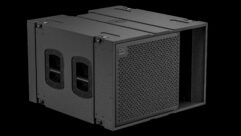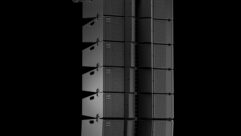About Line Arrays
Fascinating facts.
- One of the earliest mentions of what are now considered line arrays appears in acoustical pioneer Harry Olsen’s 1940 book, “Elements of Acoustical Engineering.” In the book, Olsen explains that the directivity of the line array increases with the length of the array, provided that the distance between the drivers is smaller than the wavelength being produced.
- A more contemporary definition of a line array is a line of woofers carefully spaced so that constructive interference occurs on-axis of the array and destructive interference (combing) is aimed to the sides. While combing has traditionally been considered undesirable, line arrays use combing to create the directivity necessary for them to be effective.
- In the 1970s, column speakers (or simple line arrays) were popular, but were limited by the components available at the time. For example, micro-precision parts needed to effectively accomplish the spacing for large-scale arrays didn’t exist at the time.
- There’s a common misconception that line arrays somehow enable soundwaves to combine, forming a single “cylindrical wave” with special propagation characteristics. However, under linear acoustic theory, this is impossible because soundwaves at the pressures common in sound reinforcement can’t join together.
- Line array loudspeakers can’t be used individually. The cone drivers in a line array loudspeaker depend on the other cones in the array to create directionality.
- Line arrays can be used with other types of loudspeakers as long as their phase responses match.
- Gently curving a line array — no more than 5 degrees of splay among cabinets — can aid in covering a broader area, but curving the line arrays more than that can introduce problems:
- If the high-frequency section has the narrow vertical pattern that’s required to make a straight array work, curving the array can produce hot spots and areas of poor high-frequency coverage.
- Also, while the curvature can spread high frequencies over a larger area, it does nothing to the low frequencies, which remain directional because the curvature is trivial at long wavelengths.
Sources: Meyer Sound; Alford Media










